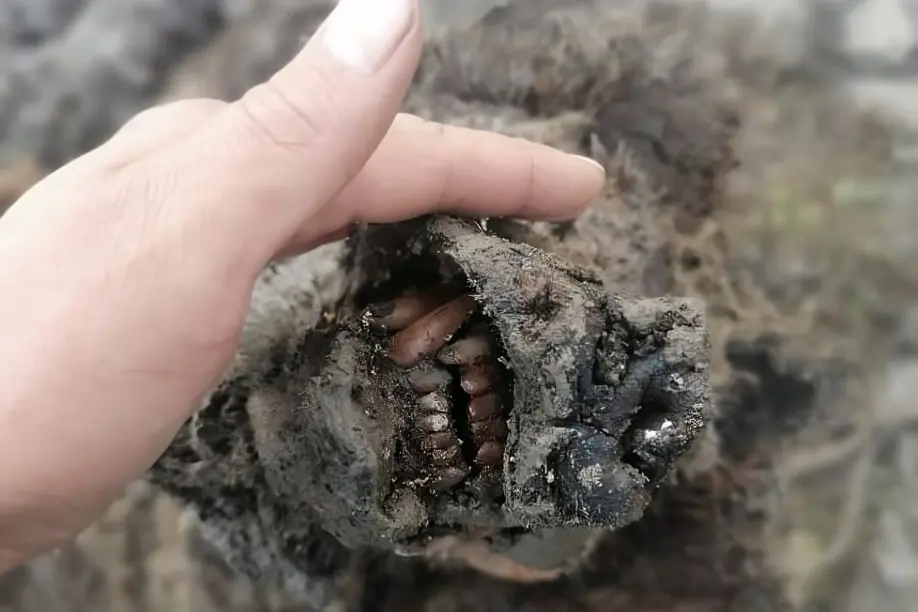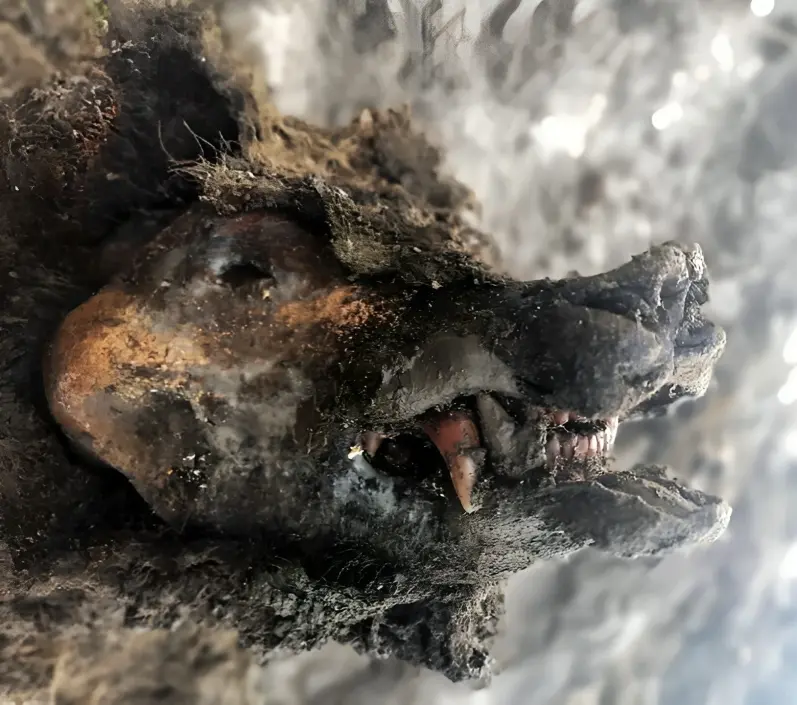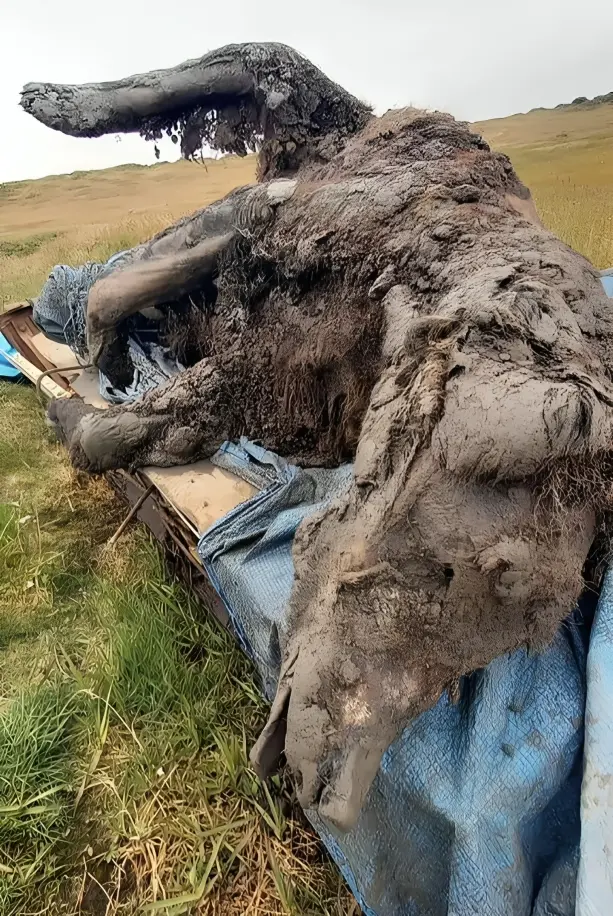Can you picture yourself coming across a being that has been preserved for tens of thousands of years? This is what happened in the Siberian permafrost where scientists found a cave bear that was 39,500 years old. This discovery has caused quite a stir within the paleontological circles and has offered a rare look into the past. The preservation is so perfect that it would seem as if the bear was just dozing off and could be awakened at any moment.
Finding this cave bear is not only an important event in archeology but also a symbol of the secrets that may be found under the layer of ice. The Siberian permafrost is famous for yielding fossilized remains, but this discovery is on an entirely different scale. Cave bear is an example of an extinct species, but it is possible to study the creature that lived in the Ice Age in detail

Image Credit: North-Eastern Federal University
Discovery Details
The discovery was made up in the Siberian taiga, where the frozen ground keeps the secrets of thousands of years. It was first spotted by a group of indigenous reindeer herders in the summer of 2024 while they were crossing the melting snow. They came across the remains of the bear which was only half-buried into the ground and they quickly understood the value of the discovery.
When looked at more closely, it became obvious that this was not just any fossil, but something quite extraordinary. This is because the features of the bear such as its fur, teeth, and even its internal organs were all preserved. The herders immediately informed a team of researchers from the North-Eastern Federal University in Yakutsk who were shocked by the level of preservation.

Image Credit: North-Eastern Federal University
The researchers could not believe their eyes. An intact specimen is very hard to come by, especially when it comes to something as old as this cave bear. The preservation is credited to the unfavorable conditions of the permafrost that froze the objects and stopped the process of decay completely.
This find is exceptional because it offers a nearly intact body of a species that has been extinct for thousands of years. Many Ice Age discoveries are usually only fragmentary, consisting of only bones or teeth at best. But here we have an entire creature, captured at the moment of freezing. This will enable scientists to carry out further researches that were earlier inconceivable such as what the bear was eating, what its genetic structure was, and even how it died.
Significance of the Discovery
The recent finding of a completely intact 39,500-year-old cave bear in the Siberian frozen ground is one of the most significant achievements in the paleontology. This discovery is a fantastic chance to learn more about the species that inhabited the Earth in the last Ice Age. The state of preservation can be described as excellent, for the fur of the bear, as well as his teeth, muscles, and internal organs are preserved. This level of preservation is very limited and gives a lot of valuable information that would otherwise be lost in the course of time.
The preservation of the cave bear also demonstrates the circumstances of the permafrost climate. The low and constant temperatures have preserved the remains by minimizing decomposition and keeping the organic components in relatively unaltered condition. It also provides important climatic and other environmental data of the time when the bear was alive. Knowing how the permafrost helped to preserve the bear, one can understand how similar finds can be preserved in other parts of the world.
Besides the bear itself, there were other important artifacts found at the site such as remains of the bear’s last meals. This, together with its preserved tissues, could give details about what the bear ate, its health status and maybe how it died. Such information about a creature from this era is a valuable treasure for science as it allows seeing the past directly.

Image Credit: North-Eastern Federal University
Historical Context
Cave bears scientifically referred to as Ursus spelaeus were a species that inhabited the world during the Pleistocene epoch that was between 300,000 and 15,000 years ago. They were mostly found in Europe and Asia, where there are forests and mountains. These bears were big and it was not uncommon to have male bears that could weigh over 1000 kilograms and they were also important predators as well as scavengers.
This is because most of these specimens are preserved by the cold and dry environment created by the permafrost. At the onset of the Ice Age, the climate began to cool and many regions of the Northern Hemisphere became glaciated, which facilitated the preservation of organic matter. When an animal died in these conditions it could be buried immediately in ice or snow and thus would remain frozen and safe from the bacteria or other decomposers which would otherwise break it down.
It is important to note that climate and environment play an important role in the preservation of these samples. Because the global temperatures are rising, the permafrost may thaw and release even more fossils into the water. But it also means that such remains could begin to deteriorate rather quickly as soon as they were exposed to the open air. This makes the discovery of this cave bear all the more special as it has remained a frozen moment in history that has been captured in its entirety.

Image Credit: North-Eastern Federal University
Challenges in Preservation
The main concern was to ensure that the specimen was not harmed in any way because the tissues and bones of the specimen were very delicate after thousands of years. This was made worse by the fact that the find was made in a remote region and the bear had to be removed from the permafrost without negatively affecting it.
The following are some of the steps that were employed during the transportation of the specimen and they include the following. The bear was first preserved by freezing it to minimize any possibility of decomposition that might result from the thawing process. High technology equipment was used to pluck and transport the bear without adversely affecting any of its body parts. After that, it was placed in a special chamber to keep the bear frozen so that more examination could be done on it.
Conclusion
The discovery of the frozen carcass of the cave bear in Siberia is a major discovery in paleontology. The challenges faced during its extraction and preservation highlight the delicate nature of such artifacts and the importance of technology in preserving them today. This fantastic fossil helps to look at the world of Ice Age and the inhabitants of this period, as well as the development of life on the planet. Maybe one day scientists will find out more facts about the bear and people will be able to study this period in the history of the world.
You may be interested in reading this article: Dead Snapdragon Flowers Look Like Weird Skulls, We also invite you to explore more of our captivating content on our channel. Double muak!
